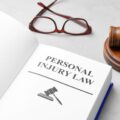Suffering a burn injury can be a frightening and painful experience. Whether it happens at home, work, or in an accident, knowing what to do immediately is crucial to preventing further damage and promoting healing.
Burn injuries can range from minor to life-threatening, depending on their severity, and quick action can make all the difference in the outcome.
It’s essential to understand how to assess the severity of the burn, properly care for it, and recognize when medical attention is necessary. Taking the right steps can significantly reduce complications and improve recovery.
Assess the Severity of the Burn
The first step in addressing a burn injury is to determine its severity, as this will guide the appropriate treatment. Burns are classified into three main degrees, each requiring different care:
- First-Degree Burns: Affecting only the outer skin layer, cause redness, minor swelling, and pain. They can usually be treated at home and generally don’t need professional medical attention unless complications arise.
- Second-Degree Burns: Affect the dermis, causing blisters, intense pain, swelling, and a red, shiny appearance. They often require medical evaluation to prevent infection and ensure proper healing.
- Third-degree burns: They are the most severe, affecting all skin layers and underlying tissues. The burn site may look white, charred, or leathery. These burns require immediate emergency care and may cause numbness at the site, though pain can still be felt around the edges.
Cool the Burn
Cooling the burn immediately can reduce damage and pain. Place the burned area under cool running water for 10 to 20 minutes to lower the skin temperature and prevent further injury.
Avoid using ice or very cold compresses, as they can worsen damage and risk frostbite. If running water isn’t available, use a clean, cool, moist cloth. Cooling helps stop the burn, reduces swelling and pain, and prevents deeper injury.
Remember, while cooling the burn is crucial, it should be followed by further treatment based on the severity of the burn and whether medical attention is needed.
Protect the Burned Area
To protect a burn site and promote healing, cover the area with a clean, non-stick bandage after cooling it. Use a sterile, non-adherent dressing to avoid further damage.
Apply the bandage loosely to prevent pressure and restricted blood flow. Opt for burn-specific dressings and avoid materials that may shed fibers. Regularly check and change the bandage as needed to keep the area clean and dry.

Protecting the burn site helps prevent complications, supports the natural healing process, and provides relief from discomfort. Proper coverage is a crucial step in managing the burn and should be done with care to avoid additional injury.
Seek Medical Help for Severe Burns
For more severe burns, prompt medical attention is essential to prevent complications and ensure proper treatment. Here’s when and why you should seek emergency medical care:
- Third-Degree Burns: If the burn affects all layers of the skin, appears white, charred, or leathery, or if the area is numb, it requires immediate emergency medical care. These burns are deep and can damage underlying tissues, including muscles and bones.
- Extensive Second-Degree Burns: If a second-degree burn covers a large area of the body or is located on sensitive areas such as the face, hands, feet, or genitals, professional medical evaluation is necessary to manage potential complications.
- Inhalation Burns: If the burn injury is accompanied by signs of inhalation injury, such as difficulty breathing, coughing up soot, or a history of exposure to smoke or toxic fumes, seek emergency care. Inhalation injuries can be life-threatening and require specialized treatment.
- Symptoms of Shock: If the individual shows signs of shock, such as pale or clammy skin, rapid heartbeat, shallow breathing, or confusion, call emergency services immediately. Shock can result from severe burns and requires urgent medical intervention.
Avoid Home Remedies
While it’s natural to want to alleviate discomfort and promote healing, relying on home remedies for burn injuries can often do more harm than good. Here’s why you should avoid certain home treatments:
- Butter, Oils, or Greasy Substances: Applying butter, oils, or greasy substances to a burn can trap heat, worsen the injury, and increase infection risk. These substances can also hinder proper healing and complicate professional treatment.

- Ice or Ice Packs: Using ice directly on a burn can cause frostbite and further damage the tissue. The extreme cold can constrict blood vessels and hinder the body’s natural healing process.
- Home-made Ointments: Ingredients like honey, aloe vera, or vinegar might be recommended in home remedies, but they can introduce bacteria or cause allergic reactions. Proper burn care requires sterile and medically-approved treatments.
Pain Management
Effective pain management is crucial for burn recovery. For minor burns, OTC pain relievers like acetaminophen or ibuprofen can help alleviate pain and reduce inflammation.
For severe burns, a healthcare provider may prescribe stronger medications. Topical treatments like burn creams or gels with numbing agents can also offer temporary relief, but use them as directed.
Relaxation techniques, deep breathing, and cognitive strategies can aid in managing pain and stress. Always consult a healthcare professional for a pain management plan tailored to the burn’s severity and individual needs.
Monitor for Signs of Infection
Burn injuries, whether minor or severe, are at risk of infection due to the damage to the skin barrier. Monitoring for signs of infection is crucial to prevent complications and ensure proper healing.
- Increased Redness and Swelling: While some redness and swelling are normal initially, worsening or spreading redness around the burn, along with significant swelling, can indicate an infection.
- Pus or Discharge: The presence of yellow or greenish pus, or any unusual discharge from the burn site, suggests an infection.
- Fever: A high fever or chills can be a sign that the body is fighting an infection, especially if accompanied by symptoms at the burn site.
- Increased Pain: If pain worsens over time rather than improving, it could indicate an infection.
Navigating the immediate aftermath of a burn injury involves careful attention to first aid, pain management, and professional medical care. By promptly assessing the burn’s severity, cooling the injury, and protecting it properly, you can significantly impact the healing process.
Effective pain management and vigilant monitoring for signs of infection are crucial to comfort and recovery.
Taking steps to prevent future burns through home and workplace safety can further safeguard against such injuries. Always seek professional guidance to ensure comprehensive care and support a successful recovery.
Jessica has a flair for writing engaging blogs and articles. She enjoys reading and learning new things which enables her to write different topics and fields with ease. She also strives to break down complex concepts and make them easy for anybody to comprehend.





